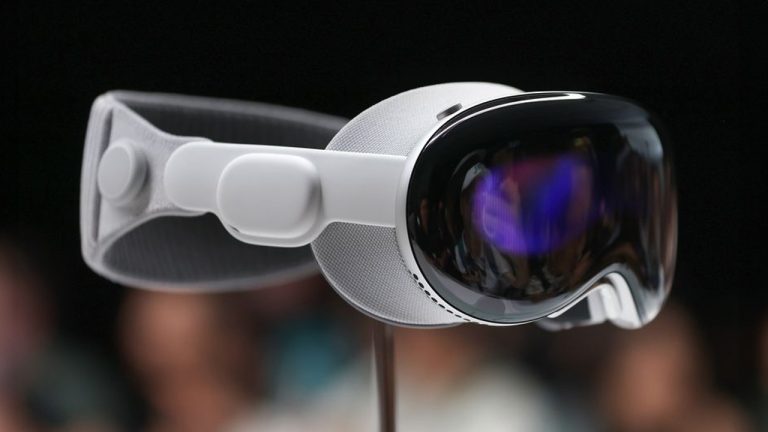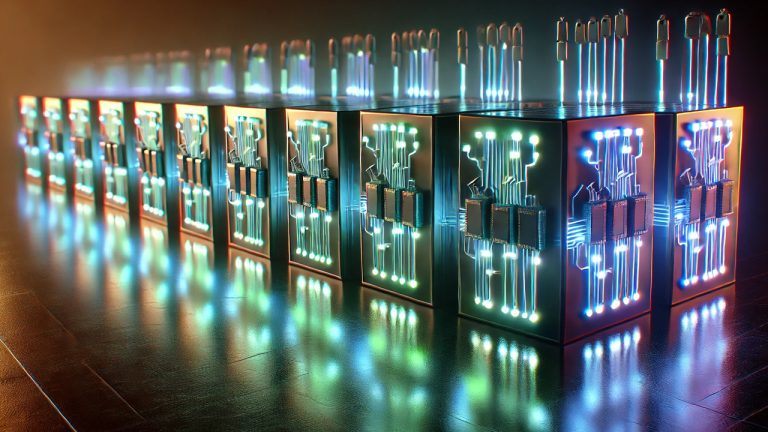
With the launch of Apple’s Reality Pro headset just a few days away, Augmented Reality (AR) is the topic on everyone’s minds. But the buzz isn’t baseless – the possibilities of AR technology are breathtaking! Fancy the new MSG Sphere in Las Vegas? Imagine having one in your own backyard! But beneath this surface-level spectacle, AR presents a major paradigm shift in technology and introduces several potential threats. AR will add exciting new dimensions to our physical world, but we need to build the infrastructure to ensure they are equitable and resistant to manipulation.
The following is an opinion editorial written by Markus Levin, the co-founder of XYO Network, a technology protocol designed to improve the validity, certainty, and value of data. As a blockchain pioneer and industry visionary, he is known for his integral role in shaping the introduction and growth of oracle technology in decentralized finance.
What Are AR ‘Layers’?
Simply put, AR layers are virtual content overlaid atop the physical world. They allow us to turn the world around us into a canvas for digital experiences – extra information can be added to points of interest, buildings can be draped in digital artwork, and mixed-reality experiences can be placed in the real world around us.
Digital layers can be shared, so you can interact with others, and persistent, meaning they continue to exist when they aren’t being accessed (like how time passes in Animal Crossing even when you’ve logged off). They are continuous universes that change over time as a result of users’ actions, similar to massively multiplayer online (MMO) video games.
The applications of this technology are diverse and abundant. For example, accessibility layers can offer extra audio or visual cues for the physical world, allowing those with hearing or sight issues to receive the exact support they need without inconveniencing others or requiring expensive physical accommodations. Other layers can let artists tuck art installations with impossible scale into any corner of their community and empower creatives to use the physical world itself as a canvas for satire.
The possibilities are endless and enthralling, but share one common thread – they allow us to communicate, express ideas, and exchange information. In many ways, AR is the next evolution of the public square, and as such, we must build the infrastructure necessary to ensure that AR layers remain accurate and resistant to tampering.
Controlling How We See The World
Who will govern these AR layers as they transition from a high-tech novelty to an everyday tool? How will we ensure that the information shown on our screens is an authentic representation of the world around us? As we begin building in a realm that our naked eyes can’t see, we expose a fatal vulnerability: our world can be distorted.
As it stands, AR layers will likely be governed by central authorities – probably the companies manufacturing AR devices such as Apple and Meta. When users build an art installation in their neighborhood, although the project is intended for their local community, it gets stored on Apple or Meta’s servers.
Of course, this is how most internet infrastructure functions now, and no one seems particularly perturbed. We regularly rely on centralized infrastructure every day… Why should we suddenly care when it comes to AR?
For starters, security researchers have been warning about the dangers of centralized infrastructure for years – AR or otherwise. There are countless examples of regimes leveraging their central authority to censor, manipulate, and distort their people’s view of the outside world. However, despite wielding these tools of manipulation, even the most corrupt regime can not distort what people see with their own eyes.
But AR goes further, it’s more intimate. It allows people to design local murals for their communities – not intended for a global audience, but to brighten up their own environment and share their gifts with those around them. It allows people to leave their mark on the world right in front of them, not in theoretical cyberspace. It will inevitably become part of what makes our home our home. It’s content that is too important to who we are as individuals and as a society at large to cede total control to others.
Building the Infrastructure for Accurate AR
Luckily, technology companies have already begun addressing this issue and developing alternative solutions. Decentralized infrastructure has had a renaissance in recent years thanks to the rise of blockchain technology and the development of new cryptographic techniques and validity proofs. The Web3 industry has driven billions of dollars into the advancement of new network architecture, encryption techniques, privacy-preserving data verification, and decentralized protocols; decentralized projects have funded the research necessary to establish sovereign networks as a realistic solution.
Blockchain technology can be leveraged to ensure immutability, meaning whatever information is recorded is permanent and cannot be altered. Zero-knowledge proofs allow us to verify that a piece of information is accurate, without gathering personal data on the person who collected or transported it. Decentralized oracles allow us to gather and cross-reference information in real-time, affording us protections from manipulation, censorship, and spam.
Eschewing centralized infrastructure and closed ecosystems is no longer a pipe dream. We’ve assembled the tools to build decentralized networks and open ecosystems that let users own their own content, keep their personal information private, avoid distorted content, and guarantee that the information on their AR screen is the same as on everyone else’s. Now it’s time to put them to use.
AR That Belongs to The People
We’re on the precipice of a thrilling shift in technology, expanding our world into new dimensions and redefining the way we interact with others. But amidst the glamor of sleek AR devices, quirky new games, and impressive features, we must remain vigilant of the potential for manipulation and continue building the infrastructure to ensure AR is a tool for expression, not oppression.
What do you think about the Augmented Reality (AR) topic? Share your thoughts and opinions about this subject in the comments section below.
Bitcoin News








Leave a Reply
You must be logged in to post a comment.